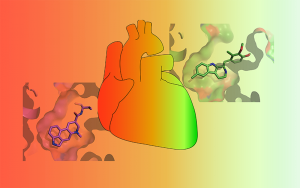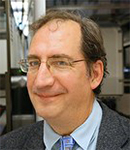By crystalizing a serotonin receptor bound to several common compounds, UNC School of Medicine scientists led by Bryan L. Roth discovered how slightly different drugs can cause severe side effects or none at all. The findings should accelerate the design of safer and more effective medications for a variety of conditions.

CHAPEL HILL, NC – Serotonin, known as the “happiness” neurotransmitter, is a chemical found in the body responsible for feelings of well-being. But serotonin isn’t the only chemical that binds to the 13 serotonin receptors found on the surface of cells. Far from it. Many approved drugs also bind to serotonin receptors. And one of these receptors – called 5-HT2BR – has made drug developers very unhappy. That’s because some drugs that treat Parkinson’s disease, migraines, pituitary tumors, and obesity were designed to target other cellular receptors but also activate 5-HT2BR, leading to life-threatening valvular heart disease. As a result, many of these drugs have been pulled from the market.
Now, for the first time, UNC School of Medicine scientists have figured out precisely why one drug binds to 5-HT2BR and activates the receptor to cause heart problems while very similar drugs do not. They’ve also discovered why a third drug acts like a 5-HT2BR antagonist – it blocks the receptor’s activity – while the very well-known similar hallucinogenic drug LSD does not.

Published in Nature Structure & Molecular Biology, this research provides drug developers with much needed insight into this serotonin receptor and other similar ones.
“For a long time, we’ve needed to know precisely how this receptor and others bind to various compounds if we want to design safer and more effective medications,” said senior author Bryan L. Roth, MD, PhD, the Michael Hooker Distinguished Professor of Protein Therapeutics and Translational Proteomics in the Department of Pharmacology. “Solving the crystal structures of these serotonin receptors bound to several compounds is the essential first step needed to create better medications, not only for the aforementioned conditions but for many others including schizophrenia, anxiety, and depression.”

In experiments led by John McCorvy, PhD, who was a postdoctoral fellow in the Roth lab during this research, scientists painstakingly induced the receptors to condense into a tightly packed crystal lattice while the receptors were attached to a drug. Then they shot X-rays at the crystal to calculate the receptor’s structure from the resulting diffraction patterns. McCorvy and colleagues did this several times to crystalize serotonin receptors bound to several different compounds, which had been impossible for decades because receptors are notoriously fickle proteins – small, fragile, and typically in motion as they bind to compounds.
The scientists then used other experimental techniques outlined in the paper to show precisely how each drug either activated or didn’t activate the receptor.
Other authors include Daniel Wacker, PhD, Sheng Wang, PhD, Jian Jin, PhD, Katherine Lansu, PhD, Alexandra Tribo, Reid Olsen, Tao Che, PhD, and Bemnat Agegnehu.
